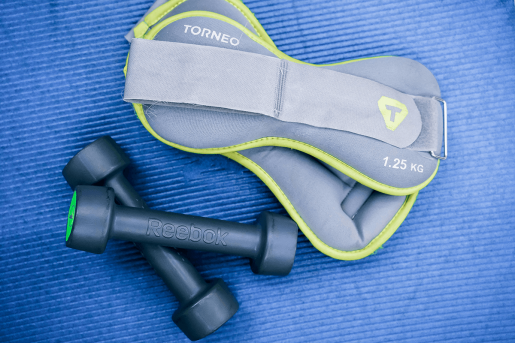Wrist and ankle weights: do they actually work?

Wrist and ankle weights are popular equipment to add to cardiovascular exercise, but they might not be the perfect fit for all workouts. They can be beneficial as they require you to load your muscles more, but it’s important to use them in lower impact movements because your joints might not be used to the excess weight.
“Running in general is a higher impact activity for your legs, ankles and knees, and if someone isn’t used to the excess weight, they can do more harm than good, leading to tendinitis or exacerbating preexisting arthritis,” said Dr. Adil Ahmed, an orthopedic surgeon at Baylor College of Medicine.
If you just started using wrist and ankle weights, Ahmed recommends wearing them for normal activities around the house, for a walk or even in the gym doing your normal workouts with added weights. Normal, day-to-day activities are not high demand or high impact and provide low risk of injury. You can get a good, high-intensity cardio workout that is no impact like the elliptical or stair master using those weights.
You should begin light, with 1- to 2-pound ankle or wrist weights and increase from there as you become more comfortable and get used to them. Starting too heavy can lead to injury. Similar to weightlifting, it is important to gradually increase as you get stronger and gain more endurance.
When exerting at a higher level with extra weight, your muscles are working more than they’re used to and eventually will fatigue, which can result in injury. “When you get to the point of muscle fatigue, the muscles can no longer help protect the joints and offload the tendons, so it’s these other tissues that are not designed to taking the added load that are now forced to,” said Ahmed, assistant professor in the Joseph Barnhart Department of Orthopedic Surgery.
Wearing wrist or ankle weights constantly for weeks can end up doing more harm than good. Start in low doses by wearing them for 15, 20 or 30 minutes at a time and build up from there.
Incorporating extra weight during exercise requires your body to exert more. Your heart has to pump harder and deliver nutrients to the muscles because they are working harder. You lift more load throughout the entire arc of motion.
“They can make your same 30-minute workout much more efficient without a doubt and that adds the element of muscular endurance and brings cardiovascular endurance into play because your heart has to pump harder constantly and your heart rate will be higher constantly,” Ahmed said.
Learn more about Baylor Medicine Orthopedics and Sports Medicine.
By Homa Warren



